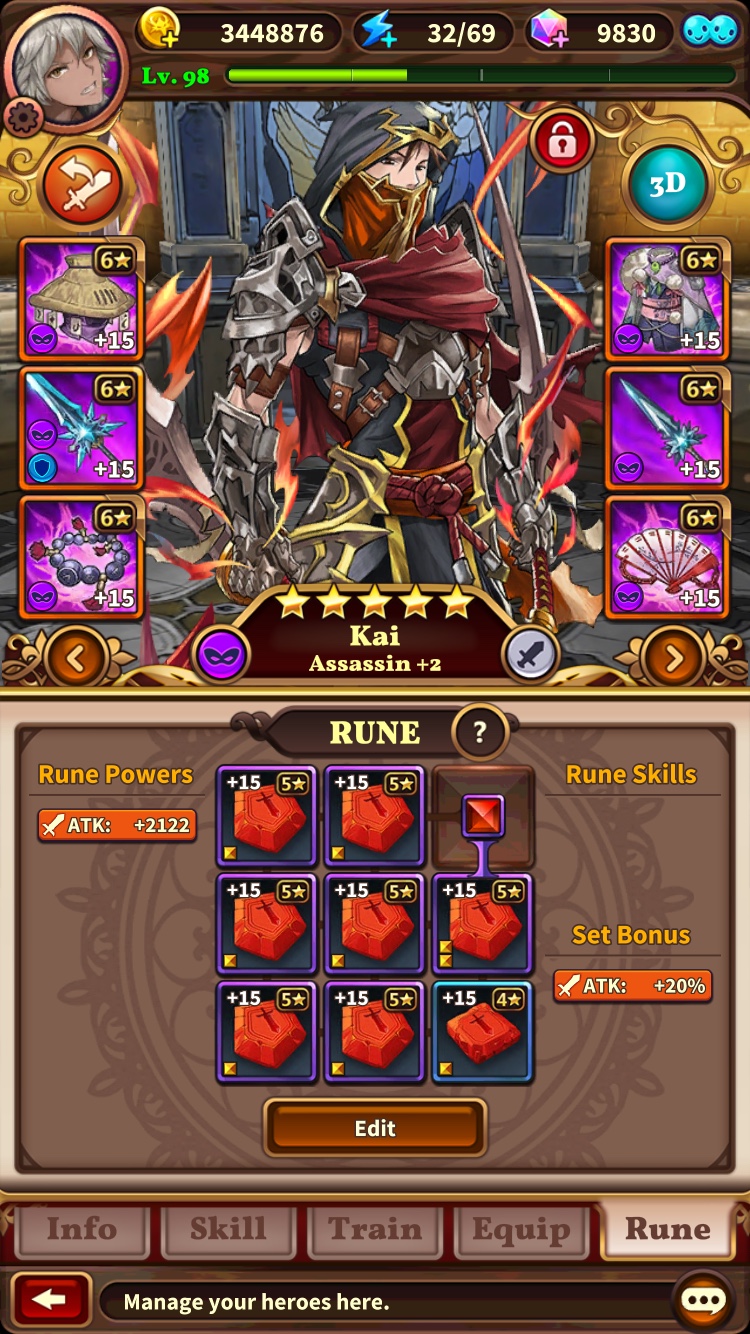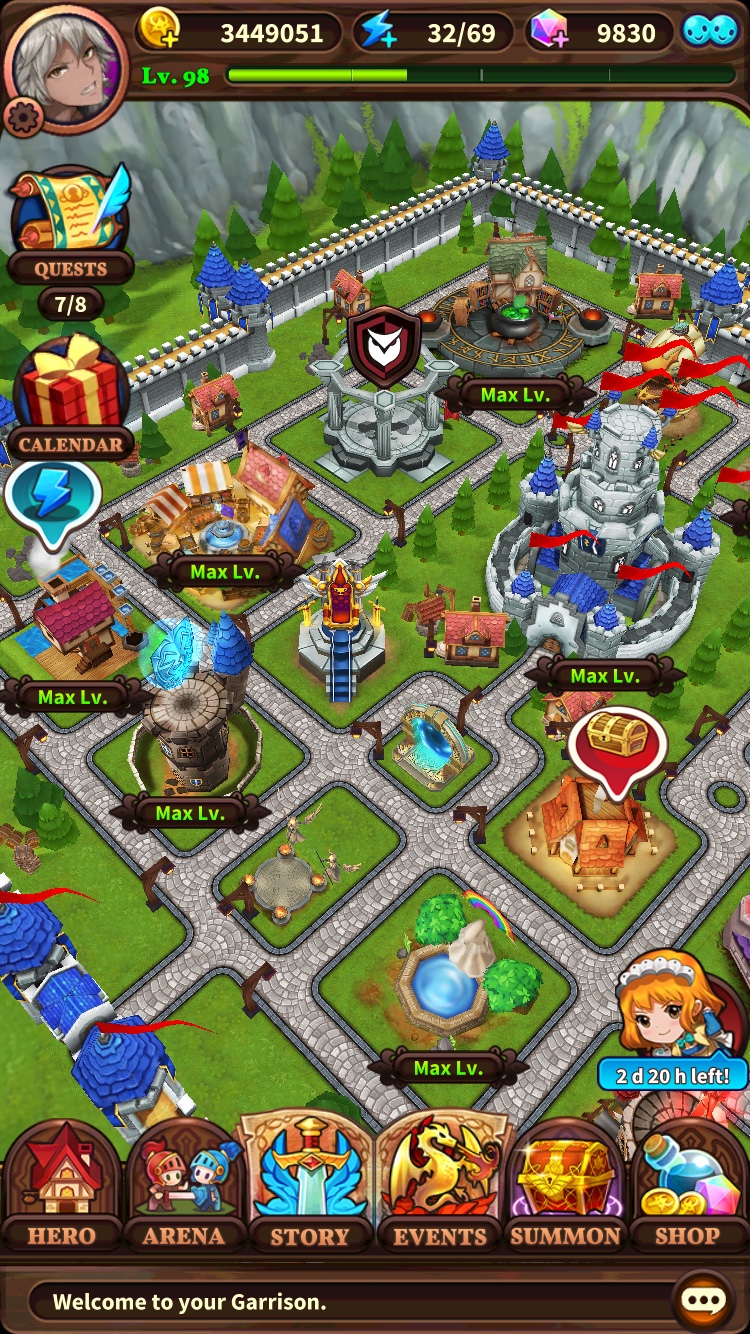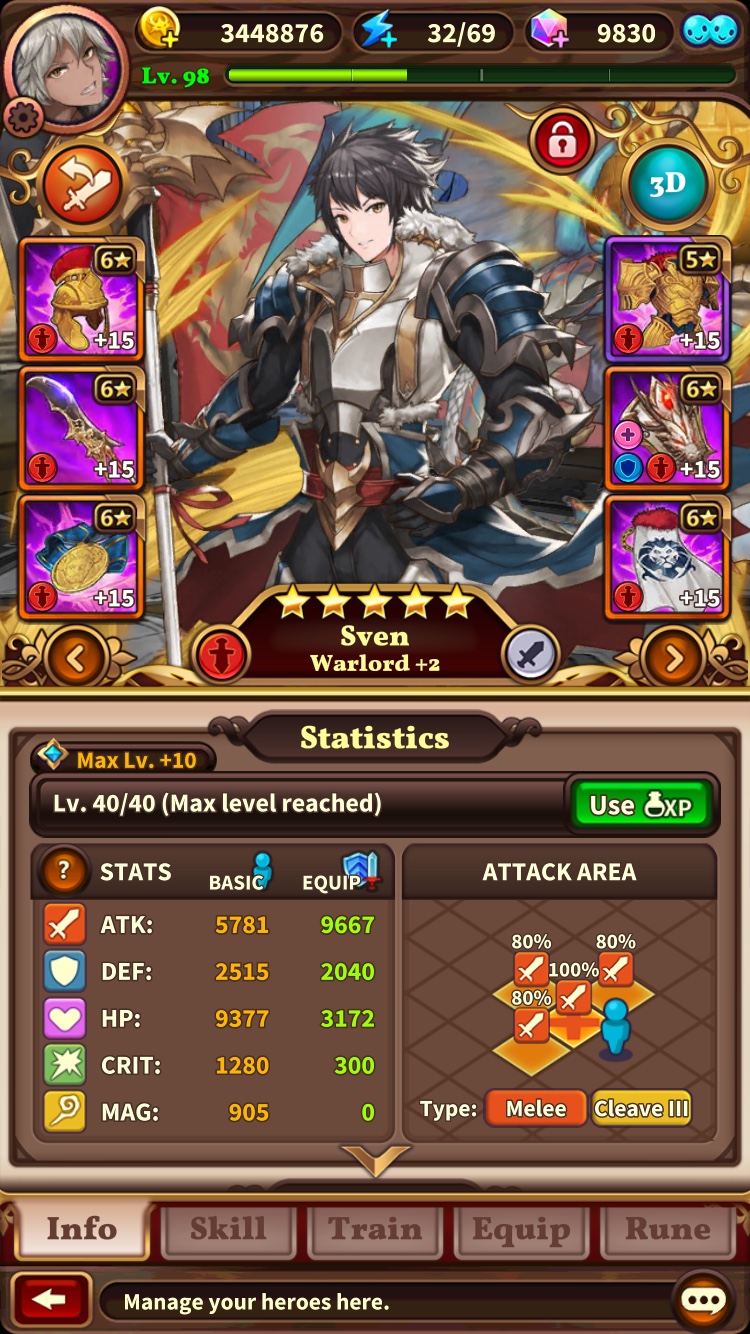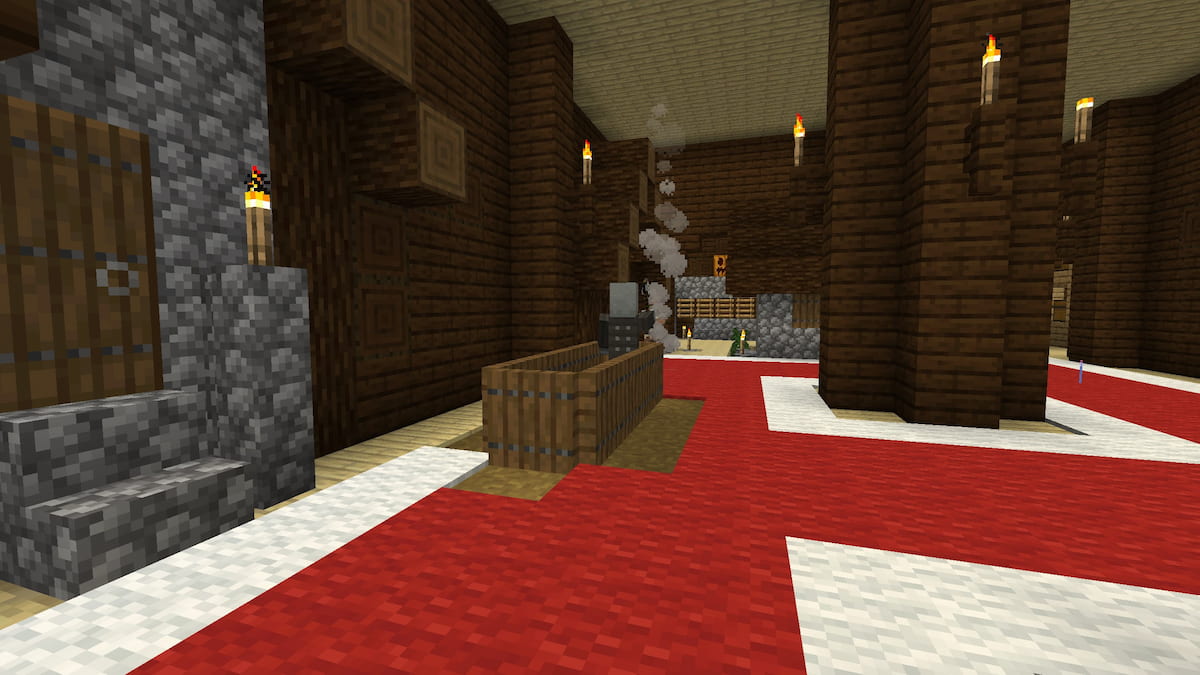Valiant Force is a surprisingly deep tactical RPG. Though you may be tempted to jump into the thick of things right away, you’ll quickly find that there is much to Valiant Force that goes unexplained in the tutorial or that you would only learn through trial and error.
Luckily, we here at GameSkinny have compiled a beginner’s guide for this mobile game to help you hit the ground running. This Valiant Force beginner’s guide is going to quickly cover choosing your heroes, Faiths, Classes, equipment, runes, and the garrison — all of which you’ll need to have a firm grasp of if you’re ever going to save Arathos. Let’s get started.
Valiant Force Heroes: Who to Keep and Who to Toss
As you’ve probably already noticed, each hero in Valiant Force is rated out of five stars based on their potential. It’s the first criteria that you should be using to assess a unit’s worth — followed by Faith, which we’ll talk about later.
The difference between characters of different star ratings is huge, especially as the levels increase. The difference is so huge, in fact, that you shouldn’t even bother training up your 1-3 star heroes, as doing so would simply waste your time and resources. Think of these units as simple fodder.
Eventually, you’ll unlock the option to “train” your units by sacrificing others, effectively feeding them to each other. You’ll want to use this option to get rid of most of your 1-3 star units while strengthening your 5 stars. (Check out our Valiant Force training and fusion guide for more tips on how to train properly.)
Obviously you won’t have much of a choice at the very start of the game, but your first priority really should be to get enough 5-star heroes to fill up your main squad.
That said, there is a group of 5-star heroes in the game — called Valiants — that are a cut above all others. They are Freya, Darrion, Lucille, Kiera, Kane, and Shizu. You’ll get to select one for free at the end of the tutorial, but for the most part, you’ll have to rely on random drops, login bonuses, etc. to acquire them. They are well worth it, however, and should be utilized whenever possible.
Valiant Force Tip: Yes, Faith Matters
In addition to using a unit’s stars to measure their potential, you should also be weighing their Faith. Each hero has 1 of 6 possible Faiths, a randomly assigned modifier to its stats. You can find a hero’s Faith by tapping the symbol to the right of their name on the hero information screen, where you can also see how that faith modifying a unit’s stats. For your convenience, though, here’s a quick rundown:
- Zeus: Mostly balanced, but with poor CRIT and MAG
- Ares: High ATK, poor MAG
- Hera: High CRIT, poor DEF and MAG
- Kratos: High DEF, poor CRIT and MAG
- Hercules: High HP, poor CRIT
- Athena: High MAG, poor DEF and CRIT
As you can see above, there is no universally best Faith; instead, they are each better for use with different types of units. You’ll obviously want each unit to have a Faith that compliments its intended playstyle, and avoid Faiths that hinder it.
Faith can affect units so much that a 4-star hero with the ideal Faith can often outperform a 5-star hero with a poor faith, so it is important to take that into consideration when deciding which heroes to invest in. That being said, don’t despair if you draw a 5-star Valiant with a bad Faith. You can pay gold to re-roll it — but just be aware that it’s going to cost a good chunk of gold and another 5-star unit.
A Primer on Classes and Jobs in Valiant Force
When you draw a new unit, it will be one of six different Classes. Like most games, classes determine that unit’s basic stats and playstyle. Here’s a quick rundown:
- Champion: Champions are the main melee-damagers. Though they boast phenomenal ATK, they have surprisingly low defense — so don’t go expecting them to tank any hits for you.
- Guardian: Guardians are your defenders. They won’t dish out any crazy damage, but they can sure as heck take it.
- Healer: As the name implies, Healers heal things. Though useful, you’ll have to keep them well-protected due to their squishy levels of DEF and HP.
- Mystic: Mystics kind of cover a wide range of magic-based functionality. They can use their magic for pure damage, or have skills that support the party in other ways.
- Ranger: Rangers possess decent ranged damage output, but require protection due to their lack of durability.
- Shadow: Though their ATK stats aren’t super high, Shadows usually have high CRIT to balance out their damage potential. They also possess many skills to debuff enemies or inflict negative effects.
Like Faiths, there is no absolute best class. In fact, it’s a good idea to have a solid mixture of classes.
In addition, units can be further specialized with Jobs. Each Class has 6 different Jobs branching out from it (not counting the starting default job), for a total of 36 possibilities. Acquiring a Job has a few requirements, and you can check out our Valiant Force job guide for more information on that. For now, just know that your units can be eventually be further customized beyond Classes.
Pay Attention to Equipment and Runes in Valiant Force
Every hero comes with 7 equipment slots, plus up to 9 slots for runes. You would think that it’s best to just equip all the best individual items possible, but you’d only be sort of right.
You’ll notice that pieces of equipment you acquire come with some sort of suffix at the end, such as “of Might” or “of Defense”. This indicates that they are part of a set with other like-named equipment. If you gather more items of a set, then they grant additional stat bonuses. Because of this, it is actually sometimes better to stick with lower-level equipment in order to maintain the set bonus.
A similar principle applies to runes. Each character can have 9 or fewer rune slots, but some runes will take up more slots than others. As such, you may sometimes find it more beneficial to unequip a higher-star rune in favor of several less powerful ones. The bottom line is that with items, higher stars does not always mean better gear for that unit.
Valiant Force Tip: Prioritize Your Garrison
The buildings in your garrison will provide a ton of useful benefits, but it’ll take you a long while to get everything built up. Because of this, you’ll need to prioritize which buildings get built and upgraded first.
The first thing you should focus on is the Gold Mine. Used for everything from summoning new heroes to upgrading weapons and armor, gold is arguably the most important resource in Valiant Force — especially for players who choose not to spend money on micro-transactions.
Next, you’ll want to prioritize the Salvage Yard, which will enable you to scrap much of the junk that you’ll find throughout the game. After that, you should turn your attention to Armorsmith and Weapon Forge, which will allow you to craft much better armor and weapons using the materials obtained from the Salvage Yard.
Next, consider the Marketplace and the Wishing Well. The Marketplace will give you access to a ton of useful items in exchange for gold and gems, while the Wishing Well simply gives you free stuff.
Don’t even bother building the Alchemy Lab, Farm, Iron Quarry, or Mercenary Camp. The former three provide you with materials and such that can easily be obtained elsewhere, while utilizing the Mercenary Camp would only waste resources that could go to strengthening your own units.
Hopefully you’re now on the right track to getting started in Valiant Force. With our beginner’s tips in hand, you should have no problem sinking your blades into all the game has to offer. Don’t forget to check back with GameSkinny for more tips, tricks, and guides for Valiant Force.










Published: Jul 17, 2017 12:28 am